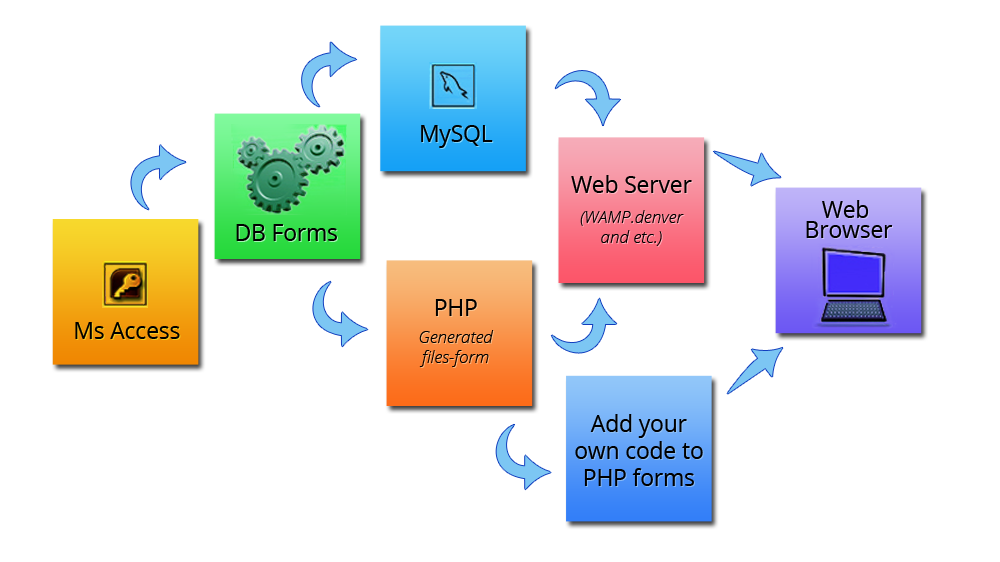
What Are Microservices?
Microservices are an architectural style that structures an application as a collection of small, autonomous services modeled around a business domain. Each microservice is self-contained and performs a specific function. They communicate with each other using lightweight protocols, often HTTP/REST or messaging queues.
Benefits of Microservices
-
Scalability: Individual services can be scaled independently based on their specific needs.
-
Maintainability: Smaller codebases are easier to understand, test, and maintain.
-
Flexibility: Different services can be developed using different technologies and can be deployed independently.
-
Resilience: Failure in one service does not necessarily bring down the entire system.
Setting Up Your Environment
Before diving into building microservices with PHP, ensure you have the following tools installed:
-
PHP: Version 7.4 or later is recommended.
-
Composer: A dependency manager for PHP.
-
Docker: For containerizing your services.
-
Postman: For testing your APIs.
Building Your First Microservice
Let’s start by building a simple microservice that handles user authentication. This service will provide endpoints for user registration and login.
1. Project Structure
Create a directory for your project and set up a basic structure:
auth-service/ ├── public/ │ └── index.php ├── src/ │ ├── Controller/ │ │ └── AuthController.php │ ├── Model/ │ │ └── User.php │ └── Service/ │ └── AuthService.php ├── config/ │ └── database.php ├── .env ├── composer.json └── docker-compose.yml
2. Setting Up Composer
Initialize Composer in your project directory:
composer init
Add dependencies for a simple microservice. For this example, we'll use Slim, a PHP micro-framework:
composer require slim/slim slim/psr7 illuminate/database vlucas/phpdotenv
3. Configuring the Database
Set up your database configuration in config/database.php:
use Illuminate\Database\Capsule\Manager as Capsule; $capsule = new Capsule; $capsule->addConnection([ 'driver' => 'mysql', 'host' => getenv('DB_HOST'), 'database' => getenv('DB_NAME'), 'username' => getenv('DB_USER'), 'password' => getenv('DB_PASS'), 'charset' => 'utf8', 'collation' => 'utf8_unicode_ci', 'prefix' => '', ]); $capsule->setAsGlobal(); $capsule->bootEloquent();
Create a .env file for environment variables:
DB_HOST=127.0.0.1 DB_NAME=auth_service DB_USER=root DB_PASS=secret
4. Defining Models
Create a User model in src/Model/User.php:
namespace App\Model; use Illuminate\Database\Eloquent\Model; class User extends Model { protected $fillable = ['name', 'email', 'password']; }
5. Creating Controllers and Services
Define an authentication service in src/Service/AuthService.php:
namespace App\Service; use App\Model\User; use Illuminate\Support\Facades\Hash; class AuthService { public function register($data) { $data['password'] = password_hash($data['password'], PASSWORD_DEFAULT); return User::create($data); } public function login($email, $password) { $user = User::where('email', $email)->first(); if ($user && password_verify($password, $user->password)) { return $user; } return null; } }
Create an AuthController in src/Controller/AuthController.php:
namespace App\Controller; use App\Service\AuthService; use Psr\Http\Message\ResponseInterface as Response; use Psr\Http\Message\ServerRequestInterface as Request; class AuthController { protected $authService; public function __construct(AuthService $authService) { $this->authService = $authService; } public function register(Request $request, Response $response) { $data = $request->getParsedBody(); $user = $this->authService->register($data); return $response->withJson($user); } public function login(Request $request, Response $response) { $data = $request->getParsedBody(); $user = $this->authService->login($data['email'], $data['password']); if ($user) { return $response->withJson($user); } return $response->withStatus(401)->withJson(['error' => 'Invalid credentials']); } }
6. Setting Up Routes
In public/index.php, set up the Slim application and define routes:
require '../vendor/autoload.php'; require '../config/database.php'; use Slim\Factory\AppFactory; use App\Controller\AuthController; use App\Service\AuthService; $app = AppFactory::create(); $container = $app->getContainer(); // Dependency Injection $container->set('AuthService', function() { return new AuthService(); }); $container->set('AuthController', function($c) { return new AuthController($c->get('AuthService')); }); // Routes $app->post('/register', 'AuthController:register'); $app->post('/login', 'AuthController:login'); $app->run();
7. Running the Service with Docker
Create a docker-compose.yml file to set up the environment:
version: '3.1' services: auth-service: build: . ports: - "8080:80" environment: DB_HOST: db DB_NAME: auth_service DB_USER: root DB_PASS: secret depends_on: - db db: image: mysql:5.7 restart: always environment: MYSQL_DATABASE: auth_service MYSQL_USER: root MYSQL_PASSWORD: secret MYSQL_ROOT_PASSWORD: secret ports: - "3306:3306"
Build and run your Docker containers:
docker-compose up --build
Your authentication service should now be running on http://localhost:8080.
Conclusion
Building microservices with PHP involves breaking down your application into smaller, manageable services that can be developed, deployed, and scaled independently. By leveraging frameworks like Slim and tools like Docker, you can create efficient and scalable microservices that meet the demands of modern web applications.
This introductory guide has walked you through setting up a simple authentication microservice with PHP. From configuring your environment and setting up a project structure to defining models, controllers, and services, you now have a solid foundation to start building more complex microservices. Embrace the microservices architecture and unlock the potential of scalable and maintainable PHP applications.






